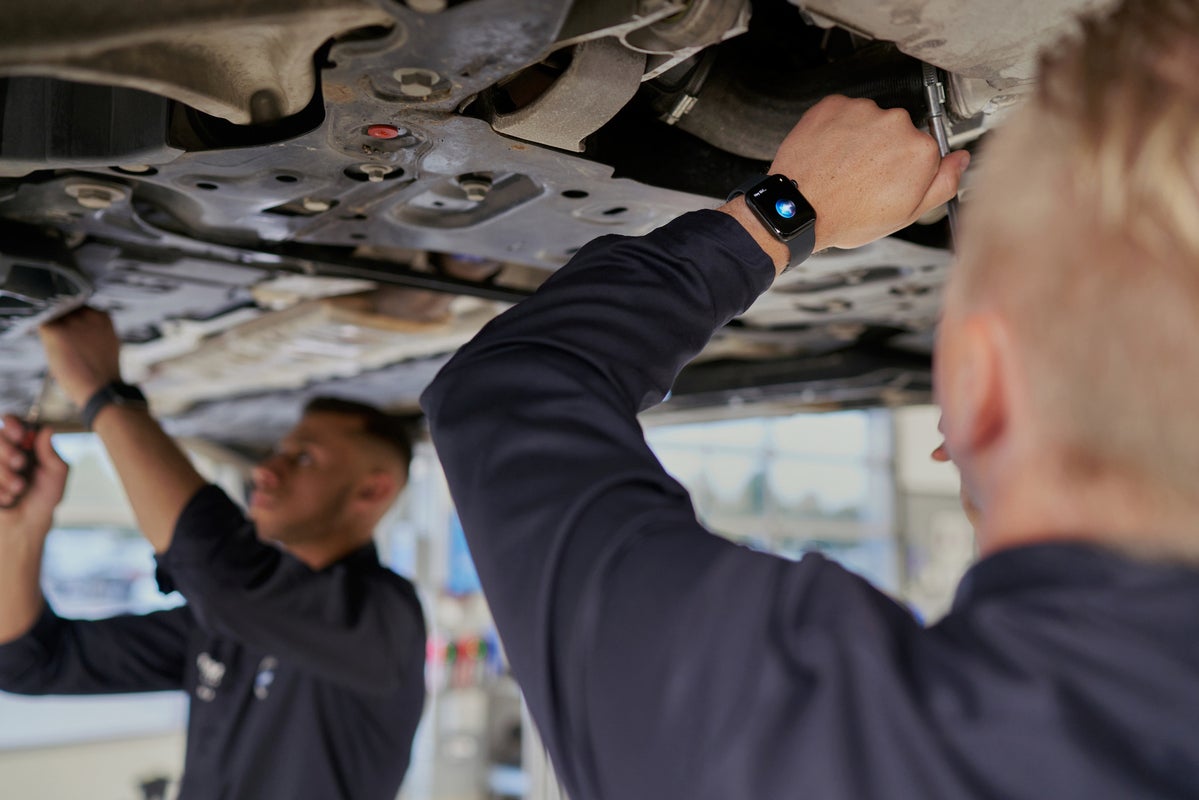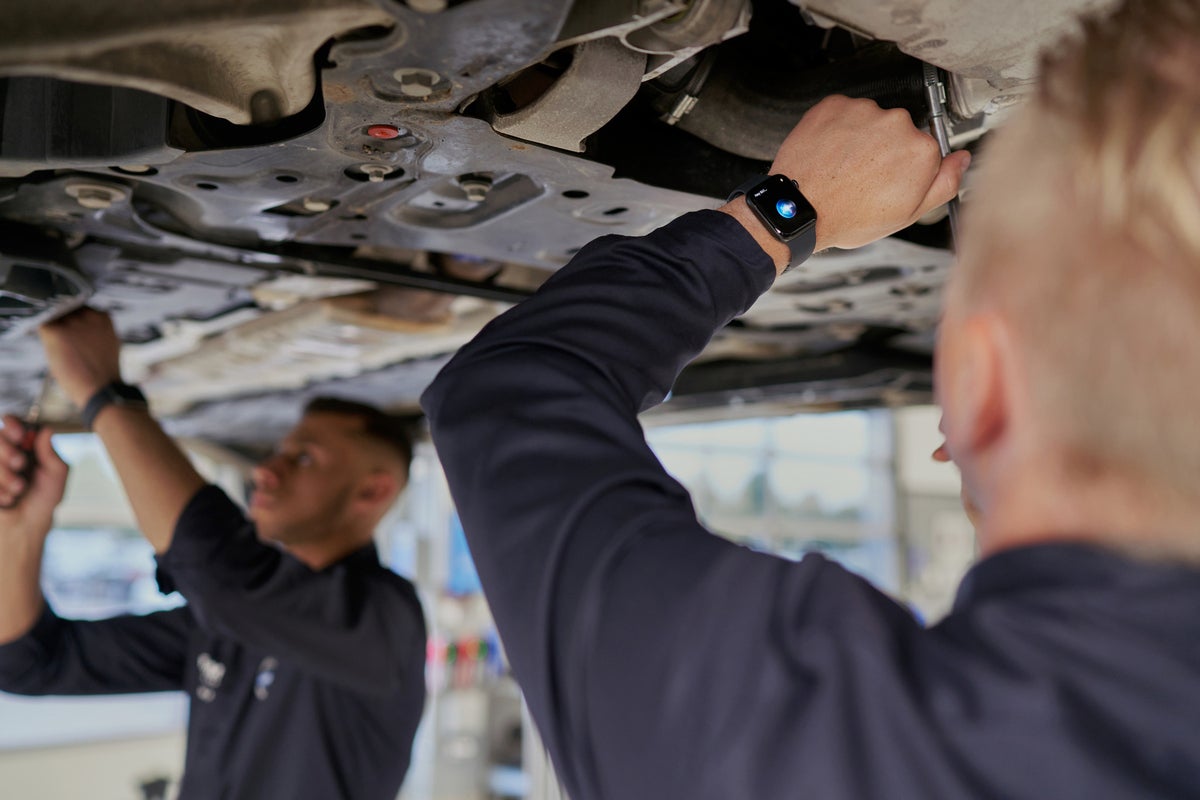
Volvo has unleashed a big improvement in customer satisfaction after equipping its 1,500 service engineers with an Apple Watch to use during their day. What, on the face of it, seems a small change reflects extensive cultural change across the company, which is actively engaged in digital transformation across its business.
What can an Apple Watch do for car servicing?
Volvo has equipped its engineers (Personal Service Technicians) with an Apple Watch and iPhone (running the Volvo Service app) to help them work more efficiently than before. The company’s primary focus is to improve customer service, as it recognizes that technicians are the main point of customer contact across the life of the Volvo they drive.
So, how can an Apple Watch in a garage improve customer service?
- In use, the engineer will receive a Notification when a customer arrives at the garage with their car.
- The watch will show the customer’s name, relevant notes, and car details.
- During the repair, engineers can access information — and once the repair is complete, they can directly call the customer to tell them.
- They can also schedule and make a subsequent follow-up call.
The benefit is that with all this information being made available through the Watch (and accompanying iPhone app), engineers don’t need to use printed records, or access a PC to stay up to date. That’s not only time-consuming, but learning how to use these systems takes up time. The company told me it took up to 6 months to train new recruits on the 15 different IT systems Volvo used before.
Now, thanks to smart analysis and smart integration of legacy systems, what technicians need to know is always with them.
“With Apple Watch, I have everything I need for my job right on my wrist,” said Johnnie Andersson, a personal service technician for Volvo.” It’s also way easier to train a new technician on the Apple Watch and the iPhone than our desktop systems.”
The result is that paperwork doesn’t disappear, technicians/engineers can stay focused, essential customer contact records aren’t lost and engineers always have clarity and purpose.
It all sounds so simple. It should sound simple. But it isn’t simple.
The app reflects a cultural shift within Volvo itself.
Simplicity by design
“Sometimes when you try to do things in the easiest way, you gain innovation out of it,” said Sanna Lindström, Volvo Car Sweden’s head of digital transformation.
But making something simple out of something complex required humble understanding. It didn’t mean endless committee meetings, but did require the company to move beyond traditional, hierarchical management practices and engage with the real needs of the people at the front end of customer contact.
Some might reflect that the evolution of Volvo’s Apple Watch Service app began when the company introduced the customer-facing Volvo Cars app, which lets drivers open doors, set climate, and start the car.
To understand the significance of the transformation, consider how the company worked on the project. It’s an approach that should form part of the blueprint for any company seeking to digitise its own business.
The making of the Volvo Service app
Volvo’s digital team is relatively small. I spoke with Lindström, Digitalisation Director Markus Lundström, and Erik Bylund, head of tech and architecture to discover how they approached the project.
The first thing to understand is that the team worked in a kind of scrum fashion. While they had some ideas concerning what they thought they would build, they also recognized the need to take their lead from the people who do the job.
While the aim was to boost customer relationships by helping technicians spend more time with the customer than with the PC, the company understood that those at the front end knew better than anyone what was required. “It was important to address the problems they actually have, not the problems we thought they had,” they said.
Volvo’s teams understand that relevance and context are essential to successful digital practices.
To build a solution technicians would use, the teams watched what people actually did during the day, rather than catering to the tasks they thought or imagined technicians should be doing.
This is the right approach. Everyone who has dabbled on the edge of digital transformation recognizes that new digital processes that add complexity are not only counter-productive — they don’t get used. “We chose to focus on the necessary,” Volvo explained.
‘To focus on the actual needs’
The team found that engineers wanted and needed contextual information. They didn’t need the interruption of leaving the job at hand to access a PC, carry printouts, find customer contact details, or anything else.
In fact, the old way of working really got in the way. The research showed that to do their job well, technicians needed to be mobile for 40% of the day, moving in the workshop, speaking with customers, or visiting stockrooms for parts. Scuttling back to the PC for information interrupted workflow.
Another temptation the team avoided was over-specification. It’s easy to imagine how useful an app can be if it has all possible information, but even the act of going through too much information gets in the way.
That’s something Volvo found. It saw that engineers didn’t want to be encumbered with too much information — their working lives were busy enough already — they simply wanted access to what they needed when they required it.
They needed to know the car, the problem, and the customer. They need to know where in terms of job completion the project is, which customers need a follow-up call and which vehicle that they worked on belonged to a customer. If they want more data, they can get it, but the essentials become more useful more of the time.
As they came to understand these needs, the team saw how an Apple Watch would provide a useful adjunct to an iPhone app, particularly to people using their hands to work. They saw that the watch could provide technicians with essential contextual information when needed.
In an era defined by mobility, why should engineers traipse over to a PC for the information they need? Why use paper when you can use a display? Volvo chose Apple’s solutions for their advanced security and stable app development environments.
The move to improve 15 legacy systems with one accessible front end also reflects the value of good management of digital change. No company can expect good results if its systems are clunky, slow, or hard to use.
In a digital age where we live like the Jetsons at home and (in some cases) the Flintstones at work, workflows that rely on multiple incompatible services and applications add friction, generate errors, and seldom deliver the results you need.
The UI needs to match purpose. Volvo’s team figured out how to make its app seamlessly integrate with multiple back-end IT systems. “Employees shouldn’t have to tolerate latency. The Volvo Service app integrates seamlessly with our backend systems, to give our technicians the data they need in real-time,” Bylund says.
The project delivered multiple benefits
The project is already generating positive results. The company told me that 80% of technicians who use the app have increased their total customer satisfaction scores. Volvo also cites a 30% increase in post-service follow up calls and emails to customers, thanks to the tech pushing complex processes out of the way.
Digitalization Director Markus Lundström said: “With the Volvo Service app we’re connecting people through technology. At one workshop, customers report a 37% improvement in the ability to access their Personal Service Technician.”
The company also reported a 40% decrease in paper printouts. Volvo is also seeing the technicians use their new kit to get other tasks done. “Some of our teams use the Walkie-Talkie feature to communicate with each other across the facility,” they said.
But the main result was Volvo’s primary goal: “The Volvo Service App is creating huge interest across Volvo Cars globally. With Apple Watch our Personal Service Technicians can create stronger, closer relationships with customers.”
Please follow me on Twitter, or join me in the AppleHolic’s bar & grill and Apple Discussions groups on MeWe.



